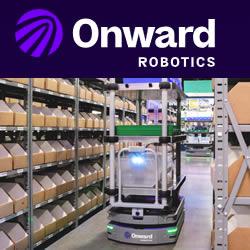WiBotic Announces $2.5 Million in New Funding for its Wireless Power Solutions for the Robotics Industry
Robotic Construction Platform Creates Large Buildings on Demand
Festo Hannover Messe Pre Show Preview
Tesla receives massive shipment of robots for Model 3 production line
Automate 2017 Show and Conference Participation Hits New Heights
Collaborative robots in the classroom deliver hands-on learning
Robotic Process Automation (RPA) - The Future of Outsourcing
Wireless Electric Planters Optimize Crop Yield
The next great CEO could be a robot, Alibaba's Jack Ma says
FIRST® Kicks Off World's Largest Celebration of Science, Technology, Engineering, and Math for Students
Assessing the Potential of Robotics and Artificial Intelligence
Key Best Practices for Successful Implementation of Automation
More Farmers Considering Drone Use
Marble and Yelp Eat24 start robot food delivery in San Francisco
AUVSI - All Things Unmanned
Records 2296 to 2310 of 3708
First | Previous | Next | Last
Featured Product

Onward Robotics - Meet Me Fulfillment Automation
Robotics and Automation - Featured Company

